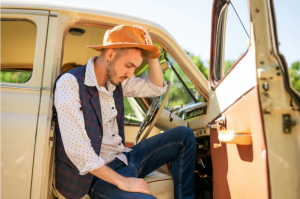Hiking boots are a must to pack on any camping trip, and lacing up hiking boots correctly is more important than many people realize. Failing to lace up hiking boots correctly can result in numerous different foot ailments. However, there are many ways to lace up hiking boots that will not cause foot trouble as well as many hiking boot lacing techniques that can be used for varying terrain. While lacing up hiking boots properly may seem like an involved process, it is quite easy once you practice a little. Read on to learn everything you need to know about lacing up hiking boots correctly for all situations.
What We'll Cover
- The Importance of Lacing Your Boots Correctly
- Types of Knots and Lacing Techniques
- How to Lace Your Boots to Help with Different Foot Issues
- Lacing Boots to Prevent Pressure
- Lacing Boots for High Arches
- Lacing Boots to Prevent Heel Slippage
- Lacing Boots to Prevent Bruised Toenails
- Lacing Boots for Narrow Feet
- Lacing Techniques for Wider Feet
- Precautions for Lacing Your Hiking Boots
- Boot Lacing Strategies for Different Hiking Terrains
- It’s Worth the Effort
The Importance of Lacing Your Boots Correctly
The importance of lacing up your boots correctly cannot be overstated. There are two main reasons that lacing up your boots correctly is so important; first, you need to choose the right lacing technique for the terrain you’re going to be on. For example, you’re going to need to use a different lacing technique for mountainous terrain than you would use for hiking on the plains. Second, lacing up hiking boots incorrectly can lead to foot problems like bruised toenails or painful blisters. As a result, these problems can can turn what would have been a beautiful hike into a difficult and challenging hike.
Not only will lacing up your boots correctly help you avoid such problems, there are even lacing techniques that will allow existing foot conditions to heal.
Types of Knots and Lacing Techniques
Here are some different types of knots and lacing techniques to try out on your hiking boots.
Loop
The loop is one of the most basic and popular lacing techniques for hiking boots. As you may already know, hiking boots have small metal “hooks” near the top of the boot designed to hold laces securely in place. However, sometimes laces can still slip around a hook. This often happens when downward force is applied to the laces, causing them to slip down off the hook. To fix this, simply loop your laces 360 degrees around the hooks instead of just pulling them up into the hooks.
D-ring Lock
The D-ring lock is another simple but extremely useful technique for lacing up hiking boots. Normally, the laces are pulled up through the eyelets. However, this may not be secure enough for heavy terrain. With the D-ring lock technique, the laces are pulled down through the eyelets from above instead of being pulled up from below, resulting in a significant amount of pressure on the laces and making them more secure.
Overhand Knot
If you want the lower laces on your hiking boots to be tighter than the laces higher up, chances are you need to use an overhand knot. This technique especially comes in handy when you’re going to be hiking uphill, as you’ll be placing the majority of your weight on your toes. The overhand knot is a very simple technique. All you do is take the top lace and thread it over the bottom lace and back up.
Marathon Loop
The marathon loop can be very useful if you’re wearing low-cut hiking boots on relatively flat terrain for many miles. It’s important to note that this technique does not work as well for high hiking boots. If you’re planning on walking a fairly flat trail for long distances, the marathon loop will improve your heel lock, meaning your heel will not be sliding around in the boots, which can lead to blisters.
To do the marathon loop, simply loop your laces from the front to back eyelet at the top of your boot. Obviously, you need to do this on both sides. After you’ve made the loop, pass the lace through the loop before you tie your boots up.
Surgeon’s Knot
The surgeon’s knot is very similar to an overhand knot. In fact, the only difference is you wrap the top lace around the bottom lace two or three times instead of just once. This allows you to create areas of your laces that are looser or tighter, just as you can with an overhand knot. However, a surgeon’s knot is even more secure.
Other Techniques
There are several other lacing techniques out there for lacing up hiking boots. Many experienced hikers will actually invent their own knots, which are often combinations of or variations on the knots above. You’ll likely be able to come up with your own knots once you get some experience under your belt.
One specific technique that is worth mentioning is called lacing windows, a technique that involves lacing your boots up vertically instead of horizontally. To put it simply, you create lacing windows by running the lace from one eyelet to the one above, not across. This can relieve some of the pressure on the top of your foot. People with high arches will often get sore spots on the top of their feet when they wear durable hiking boots, but lacing windows may prevent this from happening or at least reduce the severity of the problem.
How to Lace Your Boots to Help with Different Foot Issues
The following tips can help you prevent further foot issues or relieve current foot issues that you may already be experiencing.
Lacing Boots to Prevent Pressure
Many people feel that their hiking boots are putting too much pressure on their feet, especially if they are new to hiking. Hiking boots are supposed to feel quite snug, but not so tight that they cut off circulation. There are several techniques that can help reduce the pressure your hiking boots put on your feet. For example, the lacing windows technique that was described above is an easy way to remove some of the pressure from the top of your foot. The marathon loop can also relieve some of the pressure from this area, which is the most common problem area.
Lacing Boots for High Arches
People with high arches may find hiking boots uncomfortable. The top of the foot is already under a lot of pressure from a tightly laced hiking boot. As anyone with high arches knows, this condition raises the top of the foot, which can make hiking boots painful. However, there is a simple lacing trick that may help people in this situation. All you have to do is find the exact part of your foot that is in pain, and skip lacing up the eyelets directly above this area. This will reduce discomfort caused by high arches.
Lacing Boots to Prevent Heel Slippage
Heel slippage is another common problem with hiking boots. This problem can lead to blisters on your heels, which is an extremely painful condition. There are several different lacing techniques designed to prevent this from happening, however, and they are designed to create heel lock. The marathon loop is an example of a useful technique to prevent heel slippage. Another quick trick involves going vertically from one hook to the one above, thus skipping the lock across, and then threading this lace under the other lace when you go across.
Lacing Boots to Prevent Bruised Toenails
One of the most common problems that new hikers report is bruised toenails, a condition caused by improperly laced hiking boots. If the condition is severe enough, the toenails may even fall off. This can be prevented with a couple of the techniques described in this article. First, the lacing windows technique is good for preventing this problem. Also, the surgeon’s knot is instrumental in preventing bruised toenails.
Lacing Boots for Narrow Feet
Many hiking boots run relatively wide in their fit, so people with narrow feet may have a hard time getting correctly sized hiking boots to fit. Thankfully, there are lacing techniques that can help with this. You may want to employ what’s called segmented lacing, where you separate the top half of your laces from the bottom with a surgeon’s knot. It is important not to undue the bottom half of your laces when you take your boots off if you are using this technique.
Lacing Techniques for Wider Feet
People with naturally wide feet may also have problems with the fit of their hiking boots. The handy lacing windows technique is good for hikers with this problem. All you have to do is pinpoint where the shoes are squeezing your feet too tightly and then put a lacing window on this area. This will relieve some of the pressure on your foot and reduce discomfort.
Precautions for Lacing Your Hiking Boots
There are several precautions that every hiker should take when they are lacing up their boots, no matter which lacing technique they use. These precautions also apply for hiking in any terrain. You want to make sure that your laces are tight, but not painful, all the way up to the top of the hiking boot. In addition, you want to make sure the tightness of your laces is the same throughout the shoe. Of course, this does not apply if you’ve used a surgeon’s knot or a similar technique to intentionally create areas of varying tightness. You also want to ensure that your laces are firmly against your boot for the entire length of the lace.
Boot Lacing Strategies for Different Hiking Terrains
As previously mentioned, different hiking terrains can call for different boot lacing techniques. Different terrain will put strain on different parts of your foot, and these parts of your feet need to be supported with proper lacing. It’s worth your time to stop and re-lace your boots if you’re going to be hiking on different terrain.
If you’re going to be wearing mountaineering boots, you should use the heel lock technique. Hiking in mountainous terrain can lead to heel slippage, which is why using this technique is important. If you’re going to be making a long descent, then the lacing window technique may be desirable, as the top of your foot may be under a great deal of pressure in this situation. The marathon loop technique is good for hiking long, flat trails quickly, as it promotes circulation throughout your feet and ankles.
It’s Worth the Effort
Now that you have all the info you need to properly lace up your new vegan hiking boots, it’s time to practice. You can’t simply hope to remember the lacing technique you need while you are actually out there on the trail. You need to practice lacing up your boots until it is in your muscle memory. Also, you should do your research into the terrain you are going to be hiking on so that you know which lacing technique to use. While this may seem like a lot of work, taking the time and effort to get your boot lacing right will save you a lot of discomfort out there on the trail.
The responses below are not provided, commissioned, reviewed, approved, or otherwise endorsed by any financial entity or advertiser. It is not the advertiser’s responsibility to ensure all posts and/or questions are answered.


![Tips to Go Camping With a Toddler [Different Weather]](/assets/images/375a17532f44c72a41d33b1008823cf3.png)


